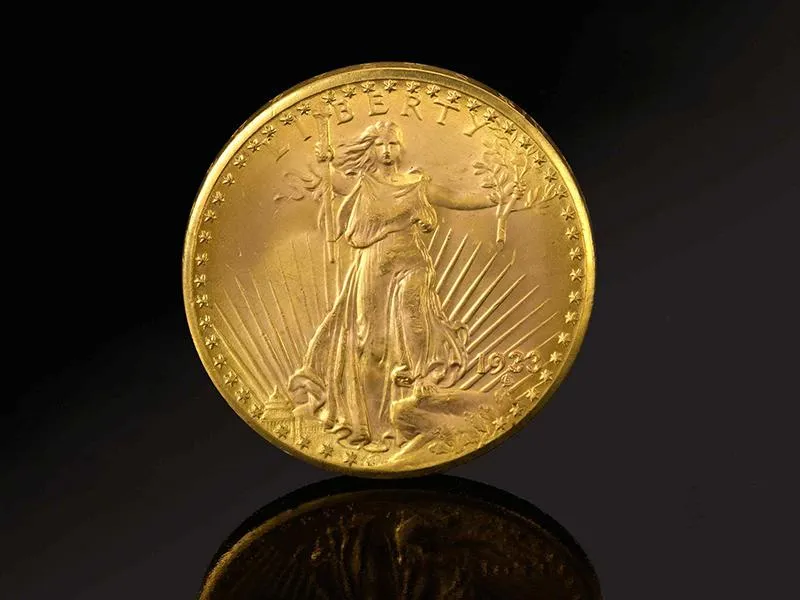Three collectibles, including a 1993 gold “Double Eagle” and the world’s rarest stamp, fetched more than $30 million at Sotheby’s
Three small collector’s items, each small enough to hold in the palm of one’s hand, broke records on Tuesday when they sold for more than $30 million in New York City.
Luxury shoe designer Stuart Weitzman auctioned off the rare objects, dubbed the “Three Treasures,” at Sotheby’s, reports James Barron for the New York Times. The trio included a shiny gold coin, a set of famously misprinted stamps and a small scrap of magenta paper popularly called “the world’s rarest stamp.”
Of the three, the 1933 “Double Eagle” stole the show, becoming the world’s most valuable coin by selling for a whopping $18.9 million. (The buyer did not want to be identified.) Per a statement, Weitzman purchased the gold $20 coin for $7.59 million in 2002; this time around, it was estimated to fetch between $10 and $15 million.
The Double Eagle coin was the last gold currency struck in the United States, reports Reuters. The newly sold specimen’s value stems from its status as the only legally privately owned 1933 Double Eagle known to survive today.
President Theodore Roosevelt commissioned the coin in the early 1900s from the country’s then-preeminent sculptor, Augustus Saint-Gaudens. Battling terminal cancer at the time, the artist took up the assignment cautiously.
“I have long wished to do what little I could to improve the shameful condition of our money, but now that I have the opportunity I approach it with fear and trembling,” wrote Saint-Gaudens to a scholar and collector in 1905, according to the Sotheby’s listing.
The Double Eagle’s final design is widely lauded as one of the most beautiful of all time. First minted in 1907, the coin features an image of Lady Liberty striding forward on its obverse and an eagle in flight on its reverse. As Owen Edwards reported for Smithsonian magazine in 2008, the sculptor based the figure of Liberty on Harriette Eugenia Anderson, a well-known model of African American descent from South Carolina.
In 1933, President Franklin Roosevelt moved the country off the gold standard in hopes of bolstering an economy ravaged by the Great Depression. The following year, the U.S. Mint’s director ordered the melting of all 1933 Double Eagles, which had been struck but never issued. Two specimens were given to the Smithsonian Institution, which now houses the coins in the National Museum of American History’s collections.
Despite the Mint’s best efforts, a handful of the rare coins escaped destruction and ended up in private hands. A tangled web of lawsuits and criminal investigations ensued, but the government eventually recovered the stolen coins—aside from this one. Due to a legal battle between the U.S. Treasury and the coin’s previous owner, the record-breaking Double Eagle is the only of its kind that a private person can lawfully own, notes Oscar Holland for CNN.
Outside of the Double Eagle, the Sotheby’s sale also sought to make stamp collecting history. But as Neda Ulaby reports for NPR, the auction’s two stamp lots failed to break previous records.
Carrying an estimate of $10 to $15 million, the 1856 British Guiana One-Cent Magenta sold for the still-hefty figure of $8.3 million. (Weitzman purchased the stamp in 2014 for $9.48 million.) According to Alex Palmer of Smithsonian, the unassuming pink paper is the only known specimen of its kind and has long represented a kind of Holy Grail for stamp collecting enthusiasts.
